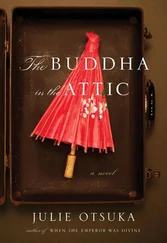But in the days that followed, he found he had little time to think about the approaching visit to the Morgensterns’. Only a month remained before the end of the term, and in three weeks’ time there would be a critique of the students’ fall projects. His project was a model of the Gare d’Orsay, built from his measured drawing; he’d finished the plans but had yet to begin the model itself. He would have to buy materials, study topographical maps so he could build the base, make templates for the forms of the model, cut out the forms, draw the arched windows and clock faces and all the stone detailing, and assemble them into the finished piece. He spent the week in studio surrounded by his plans. At night, after work, he was consumed with preparations for a statics exam, and in the afternoons he attended a series of lectures by Perret on the ill-fated Fonthill Abbey, a nineteenth-century faux cathedral whose tower had collapsed three times due to poor design, hasty construction, and the use of shoddy materials.
By Saturday afternoon when he arrived at work, the only mystery in his mind was how he had managed to reach the day before the luncheon without having had his only white shirt laundered, and without having set aside a few francs for a gift for his hostess. After confessing the problem of his attire to Madame Gérard, he found himself in the workshop of the wardrobe mistress, Madame Courbet, who had constructed all the workers’ clothes and military uniforms required for The Mother. While the revolution unfolded onstage, Madame Courbet had turned her attention to a different struggle: She was sewing fifty tutus for a children’s dance recital that was take place at the Bernhardt that winter. Andras found her sitting amid a storm of white tulle and tiny silk flowers, her sewing machine beating its mechanical thunder at the center of that snowy cumulus. She was a sparrowlike woman past fifty, always dressed in impeccably tailored clothes; today her green wool dress was frosted with icy-looking fibers, and she held a spool of silver-white thread between her fingers. She removed her rimless spectacles to look at Andras.
“Ah, young Mr. Lévi,” she said. “And is it another complaint from Monsieur Claudel, or has someone else split a seam?” She twisted her mouth into a wry moue.
“It’s something for me, actually,” he said. “I’m afraid I need a shirt.”
“A shirt? Are you to have a walk-on in the play?”
“No,” he said, and blushed. “I need a shirt for a luncheon tomorrow.”
“I see.” She lay down the thread and crossed her arms. “That’s not my usual line.”
“I hate to disturb you when you’re already so busy.”
“Madame Gérard sent you, didn’t she.”
Andras confessed that she had.
“That woman,” said Madame Courbet. But she got up from her little chair and stood in front of Andras, looking him up and down. “I wouldn’t do this for just anyone,” she said. “You’re a good young man. They hound you to death here and pay you almost nothing, but you’ve never been short with me. Which is more than I can say for certain people.” She took a tape measure from a table and strapped a pincushion to her wrist. “Now, a gentleman’s shirt, is it? You’ll want a plain white oxford, of course. Nothing fancy.” With a few deft movements she measured Andras’s neck and shoulders and the length of his arm, then went to a wardrobe cabinet marked CHEMISES. From it she extracted a fine white shirt with a crisp collar. She showed Andras how the shirt contained a special pocket inside for a tube of fake blood; in one play, a man had to be stabbed night after night by his wife’s jealous lover, and Madame Courbet had had to make an endless supply of shirts. From a drawer marked CRVT she selected a blue silk tie decorated with partridges. “It’s an aristocrat’s tie,” she said, “a rich man’s tie done up from a scrap. Look.” She turned the tie over to show him how she’d sewn the silk remnant onto a plain cotton backing. Andras put it on along with the shirt, and she pinned the shirt for a swift alteration. At the end of the evening she gave him the finished shirt, wrapped in brown paper. “Don’t let anyone else know where you got this,” she said. “I wouldn’t want the word to get out.” But she pinched his ear affectionately as she sent him on his way.
As he was leaving, he had a sudden inspiration. He went to the grand front entrance of the theater, where Pély, the custodian, was sweeping the marble floor with his push broom. As usual, Pély had set the previous week’s flower arrangements in a row inside the front doors; in the morning they would be picked up by the florist, vases and all, and replaced with new ones. Andras tipped his cap at Pély.
“If no one’s using these flowers,” he said, “may I?”
“Of course! Take them all. Take as many as you like.”
Andras gathered a staggering armload of roses and lilies and chrysanthemums, branches with red berries, faux bluebirds on green twigs, feathery bunches of fern. He would not arrive empty-handed at the Morgensterns’ on the rue de Sévigné; no, not he.
CHAPTER SEVEN. A Luncheon
IT HAD BEEN only a few weeks since Andras had studied the architecture of the Marais with Perret’s class. They had taken a special trip to see the Hôtel de Sens, the fifteenth-century city palace with its turrets and leonine gargoyles, its confusion of rooflines, its cramped and cluttered façade. Andras had expected Perret’s lecture to be a stern critique, a disquisition on the virtues of simplicity. But the lesson had been about the strength of the building, the fine craftsmanship that had allowed it to endure. Perret moved his hand along the stonework of the front entrance, showing the students what care the masons had taken in cutting the voussoirs of the Gothic arches. As he spoke, a pair of Orthodox men had appeared on the street, leading a group of schoolboys in yarmulkes. The two groups of students had stared at each other as they passed. The boys whispered to each other, looking at Perret in his military cloak; a few lagged behind as if to hear what Perret might say next. One boy snapped a salute, and his teacher delivered a reprimand in Yiddish.
Now Andras passed behind the Hôtel de Sens, past the manicured topiary gardens and the raised beds planted with purple kale for winter. Hefting his load of flowers, he sidestepped through the traffic on the rue de Rivoli. In the Marais the streets had an inside feel, almost as if they were part of a movie set. In Cinescope and Le Film Complet, Andras had seen the miniature cities built inside cavernous sound-stages in Los Angeles; here, the pale blue winter sky seemed like the arching roof of a studio, and Andras half expected to see men and women in medieval costume moving between the buildings, trailed by megaphone-wielding directors, by cameramen with their rafts of complicated equipment. There were kosher butchers and Hebrew bookshops and synagogues, all of them with signs written in Yiddish, as though this were a different country within the city. But there was no anti-Semitic graffiti of the kind that regularly appeared in the Jewish Quarter in Budapest. Instead the walls were bare, or plastered with advertisements for soap or chocolate or cigarettes. As Andras entered the tall corridor of the rue de Sévigné, a black taxi roared past, nearly knocking him off his feet. He steadied himself, shifted his vast bouquet from one arm to the other, and checked the address on the card Madame Gérard had given him.
Across the street he could see a windowed shop front with a wooden sign cut into the form of a child ballerina, and beneath it the legend ÉCOLE DE BALLET-MME MORGENSTERN, MAÎTRESSE. He crossed the street. A set of demi-curtained windows ran along both sides of the corner building, and when he stood on his toes he could see an empty room with a floor of yellow wood. One wall was lined from end to end with mirrors; polished wooden practice barres ran along the others. A squat upright piano crouched in one corner, and beside it stood a table with an old-fashioned gramophone, its glossy black morning-glory horn catching the light. A diffuse haze of dust motes hovered in the midday silence. Some remnant of movement, of music, seemed revealed in that tourbillon of dust, as if ballet continued to exist in that room whether a class was being conducted there or not.
Читать дальше












